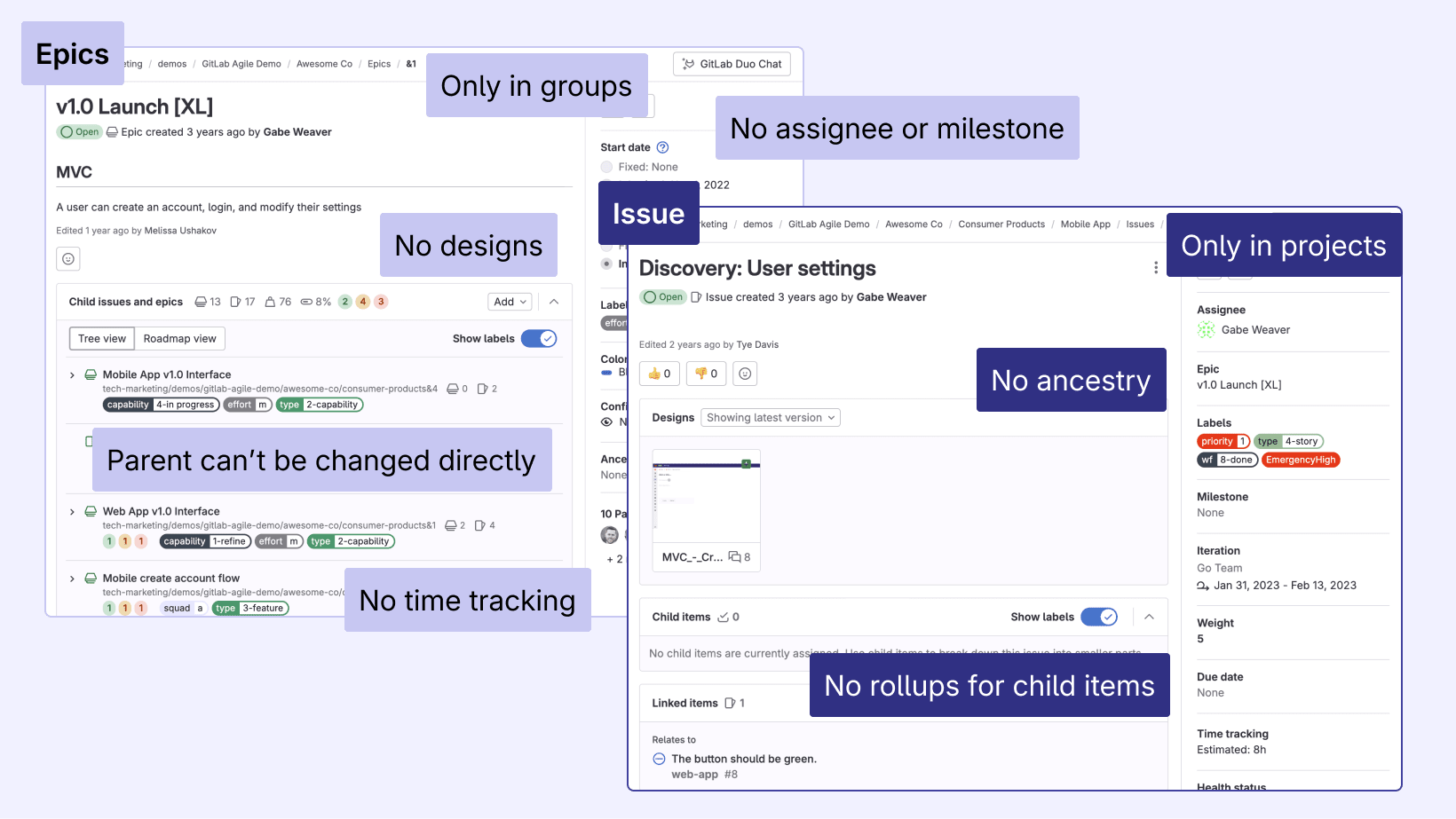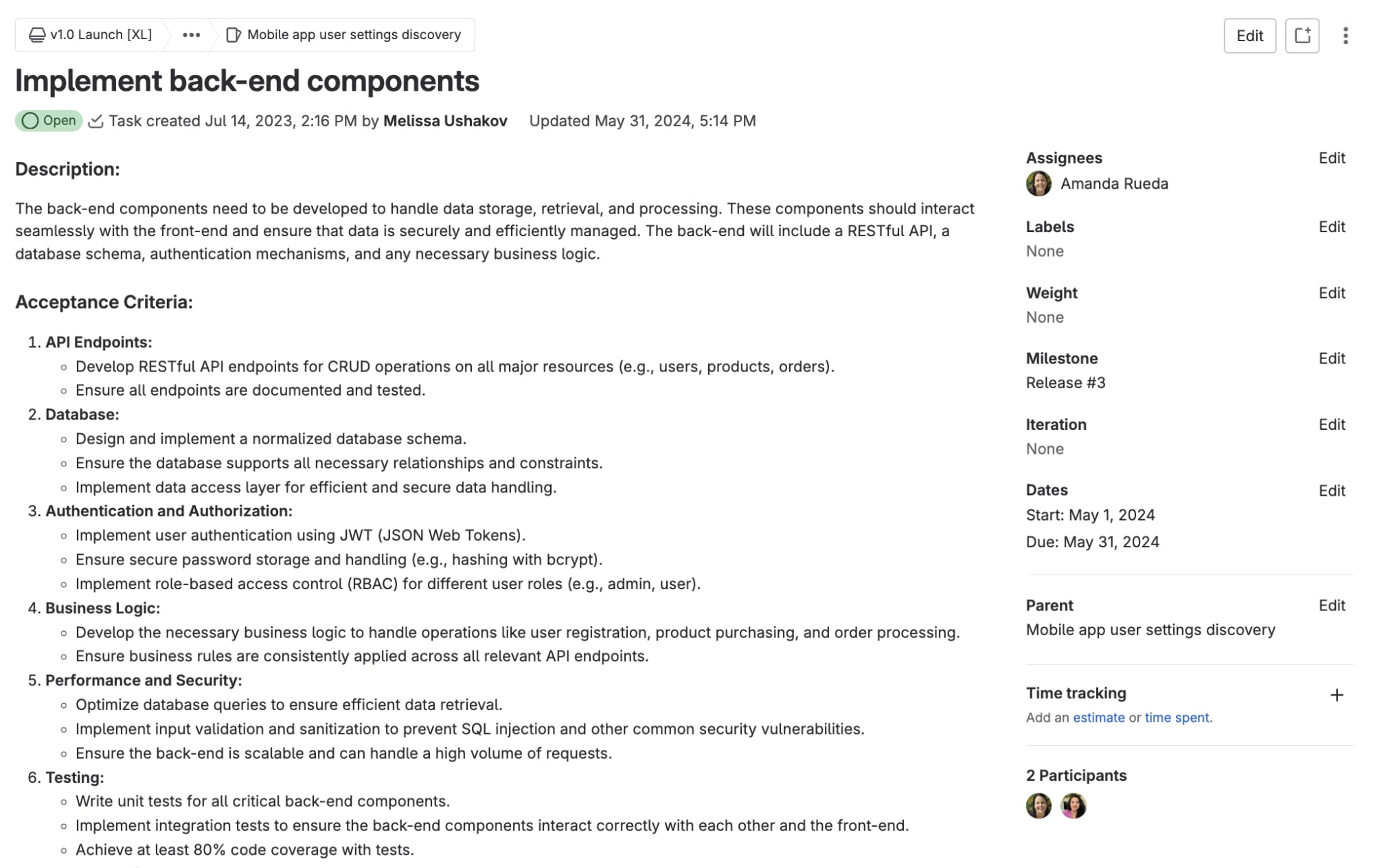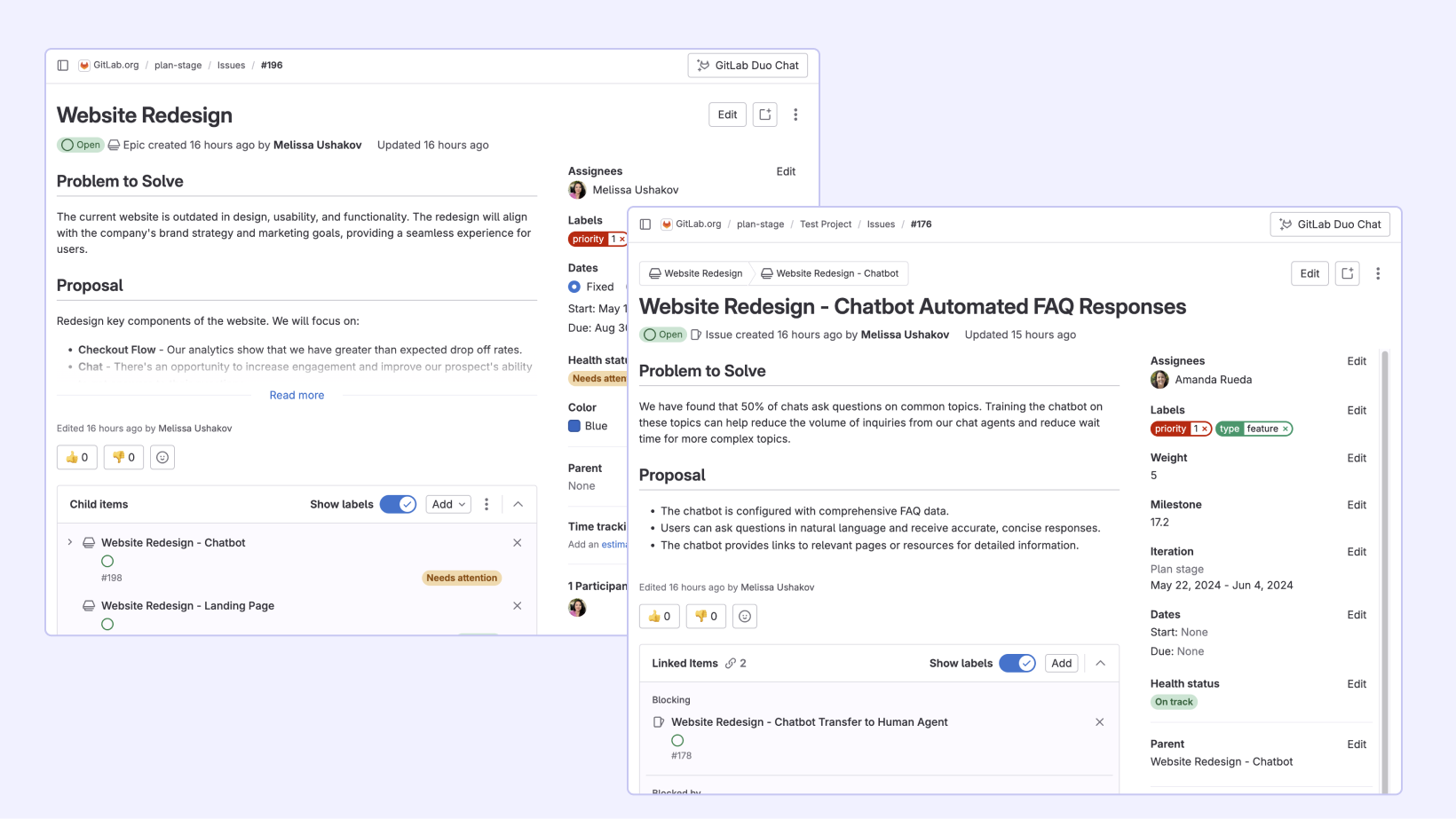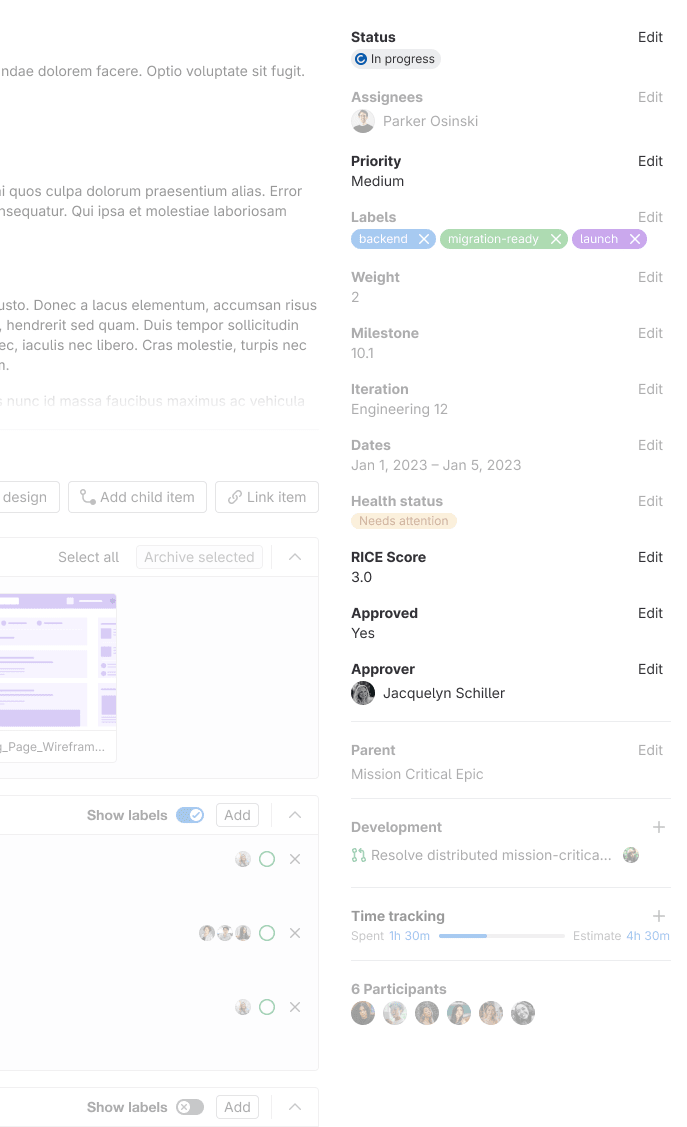Published on: June 18, 2024
5 min read
First look: The new Agile planning experience in GitLab
Learn about new capabilities, including a brand-new framework, that will support a more unified and flexible user experience – and find out what's coming next.

In today's fast-paced world, GitLab customers rely on our Agile planning features to consistently deliver value to their users. By leveraging GitLab's issues, sub-epics, and epics, leaders gain a clear view of organizational activities, enabling them to make strategic decisions that align with their business goals. At GitLab, understanding and adapting to our customers' needs is core to our mission. As our customers' needs evolve, so must our approach, prompting us to enhance our existing functionalities to serve them better.
GitLab has embarked on a journey to advance our Agile planning capabilities and unlock a new level of collaboration and shared awareness from tasks to goals. In this article, you'll learn about our approach to Agile planning, what you can expect to change in the next few releases, and our exciting long-term vision.
The need for a new approach
Today, epics and issues exist as separate experiences. For example, epics don’t have assignees and issues are not supported at the group level. These differences create friction for team leaders who work with issues and epics and expect similar functionality to be available for a seamless workflow and effective Agile planning. The lack of uniformity can also cause confusion among team members and ultimately hinder productivity. We understand that these differences make the Agile planning experience in GitLab more challenging than it should be.

Consistency is not the only challenge with the current Agile planning experience in GitLab. Our user base feedback and market analysis point to the need for more flexibility to represent an organization’s unique way of working. Many Agile and strategic frameworks in the market inform an organization's processes. Our approach is to provide a flexible solution that can adapt to your needs while supporting common, out-of-the-box frameworks. One example of a widely adopted framework is "Objectives and Key Results," which helps leaders tie operational work to strategic objectives. Epics and issues alone could not support our customers' growing need for more types of planning objects to represent their organization’s workflow.
Your input has been invaluable in shaping our strategy to center on a unified experience; as a result, we created the Work Items framework to reimagine our current issue and epic implementation and pave the way for the future. This new model will allow us to provide a more consistent experience for our existing Agile planning objects, improving the day-to-day experience for Agile teams using GitLab. It will also facilitate the introduction of new features and improvements more rapidly, as the unified architecture simplifies development and maintenance. The Work Items framework is crucial to delivering a more powerful, flexible, and user-friendly Agile planning experience in GitLab.

Iterating while rebuilding
Protecting our users from disruption was a top priority as we rebuilt our Agile planning capabilities. Many users rely on epics and issues for business-critical processes in their organization, so an uninterrupted experience was paramount. We also wanted to keep true to GitLab’s iteration value to ensure and deliver value incrementally. Tasks were introduced and are powered by the Work Items framework, allowing us to provide net new value to our users while we build the capabilities needed for issues and epics over time. Tasks have had incredible adoption and have provided a way for us to get invaluable feedback about the new work items experience.

Exciting updates coming
We are excited to announce a refreshed epics and issues experience in GitLab – powered by the Work Items framework – is coming later this year. Existing epic and issue data, APIs, webhooks, and URLs will continue to work as expected. You will not need to do anything to prepare or to take advantage of the new functionality. After the transition, you will notice a refreshed look and feel on the detail page and additional capabilities for epics, such as assignees, health status, and more!

This is just the beginning of our journey! Over the next few months, we will release long-awaited functionality, including custom fields and configurable statuses, to provide additional flexibility in your planning workflows. We also plan to update our lists, boards, and roadmaps experience to give you more ways to interact with and visualize your planning data.

Getting started with GitLab
We can’t wait for you to experience these enhancements. They’re designed to take your Agile planning to the next level. Stay tuned for more updates, and get ready to harness the full potential of GitLab’s innovative capabilities!
The Enterprise Agile Planning add-on is available to GitLab Ultimate subscriptions. Please contact your GitLab sales representative for more information.
Disclaimer: This blog contains information related to upcoming products, features, and functionality. It is important to note that the information in this blog post is for informational purposes only. Please do not rely on this information for purchasing or planning purposes. As with all projects, the items mentioned in this blog and linked pages are subject to change or delay. The development, release, and timing of any products, features, or functionality remain at the sole discretion of GitLab.

